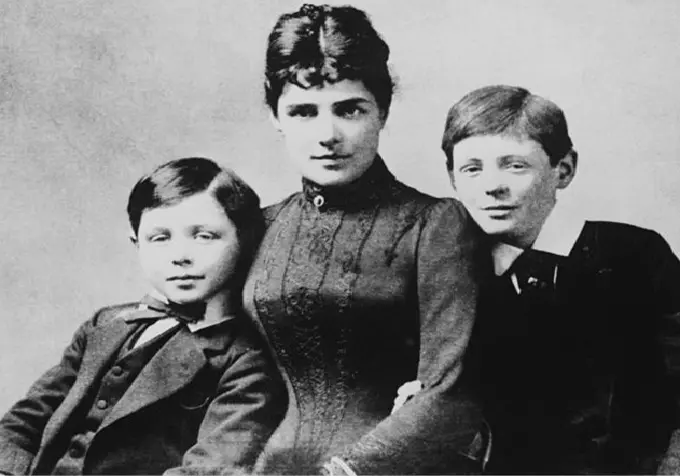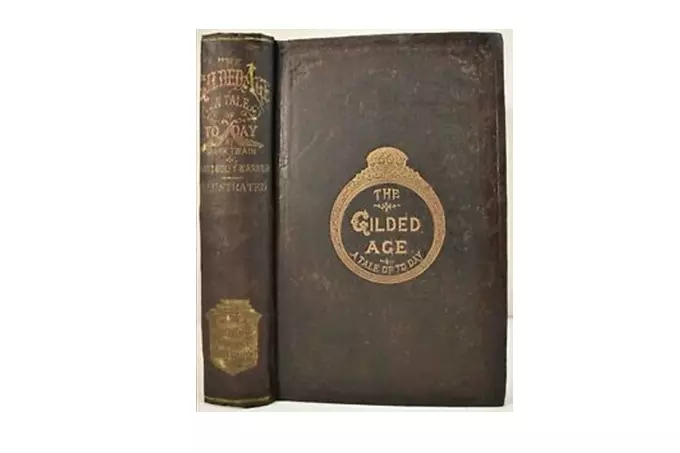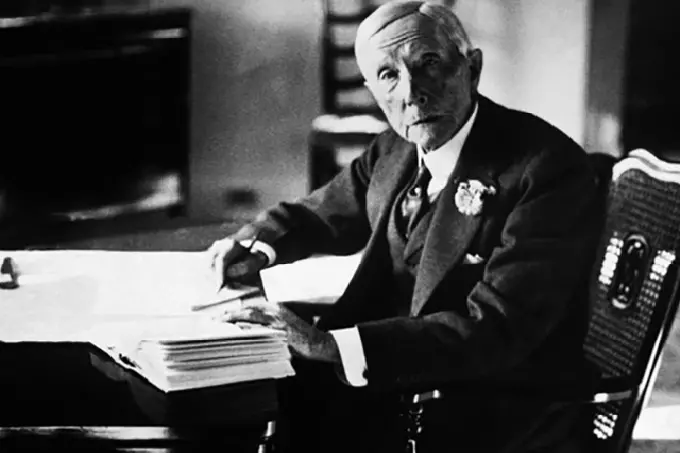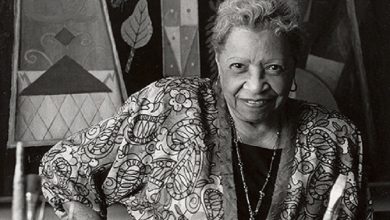Who are the “dollar princesses” and why did they buy impoverished princes?

The historic clash of the old and new worlds occurred when American socialites and wealthy heiresses rushed across the ocean. “Dollar princesses” had everything that one can dream of in this life. Their every wish was invariably granted. Who could prevent them from “buying” a real prince on a white horse? Nobody!
The impoverished representatives of the British nobility were forced to enter into this symbiosis with American money with a distinct taste of misalliance. Of course, love cannot be bought, of course, but the social status, as it turned out, is quite…
Lord and socialite
The first such “love” story was with Lord Randolph Churchill and an American socialite named Jenny Jerome. It is not known for certain what happened between them in 1874, but they announced their engagement three days after they met.
Jenny was a bright representative of the high New York society of that time. She was a very wealthy heiress. Among other things, to the even greater horror of the Churchill family, she was a quarter Mohawk.
Randolph became the first in an ancient noble family with a long history who was going to marry a woman who did not correspond to his high social status. Father and mother did not already know what to do to dissuade their son from such a blatant misalliance. Rich man Jerome quickly solved this problem – he offered a simple space dowry, which today is equivalent to more than 4 million US dollars.
Although Lord Churchill and his wife Jenny were considered a highly unconventional couple, Lady Churchill became the darling of the British elite. Even the Prince of Wales, who would later become King Edward VII, very often liked to enjoy her company. A year after the wedding, the couple had their first child. The heir was named Winston. This is the same Winston Churchill, who in the future would become one of the most famous British Prime Ministers in history.

Old world and new money
Unfortunately, not all “dollar princesses” are as lucky in life as Jenny Jerome. A successful love story has caused a real invasion of wealthy American brides in the Old World. They arrived in England hoping to have their own happily ever after with a real prince. At the turn of the 19th and 20th centuries, hundreds of American socialites arrived in Britain. Thanks to them, the British economy received billions of injections.
“Dollar princesses” have become a real lifeline for old England. The British aristocracy lost almost all their income. Empty, useless farms suddenly surrounded the majestic royal castles. There was no one and no reason to work for them anymore.
The United States has taken the lead in producing and exporting grain from Great Britain. America entered an era known as the Gilded Age. Noble families eked out an almost miserable existence, it was necessary to forget about the former luxury and splendor. They had nothing left but titles and family heirlooms. As it turned out, this is also a product that is in great demand.

The daughters of the new American high society had everything and more. They did not have only a high social status but really wanted to add some title to their name. Thus, the girl’s family would have risen above the rest. The presence of a lady or Duchess in the family could significantly increase the family’s social status in the United States. At that time, many “new money” fought with all their might for the right to put their name next to the representatives of the “old money”, such as the Rockefellers and the Vanderbilts.

Not a golden age, but gilded
The Gilded Age is named after Mark Twain’s 1873 novel The Gilded Age: A Tale of Today. The writer used this mocking term to characterize the era of the late 19th century. Social problems were carefully masked with a thin layer of gilding of economic growth. Instead of the golden age promised after the Civil War, only the gilded age came.
The upper strata of society spent their days enjoying abundance. Exquisite, expensive clothes, huge mansions furnished with unspeakable luxury, all kinds of comforts, travel, and various entertainments. On the other hand, the working class found itself hostage, to 14 hours of hard work in factories, and mines, with a small salary, which was barely enough to live on. Men, women, and even children worked from sunrise to sunset in terrible conditions, losing health and dying early. Meanwhile, the owners of all these “factories, newspapers, ships” became richer and more powerful.
Duchess in a million
Due to money-related politics, most “dollar princess” marriages were more like a business deal than a union of two loving hearts. After that, not everyone got what they expected. American women struggled to get used to the new boring way of life in the Old World. Spending days in the big and dark country castles was unspeakably depressing. The company was only servants. Social isolation drove American women crazy. On the other hand, the British treated the American way of life with contempt.
Despite all the shortcomings, “dollar princesses” have become so popular that even the British royal family has fallen under the influence of this trend. In 1880, heiress Frances Ellen Wark married Baron Fermoy. The couple divorced ten years later. Frances Wark’s great-granddaughter, Diana Spencer, married her own prince, Prince Charles, Duke of Wales. Her son is now heir to the British throne.
Another famous story that went wrong comes from the very top of American high society. Consuelo Vanderbilt was the daughter of wealthy businessman W.C. Vanderbilt. His fortune today is estimated at more than 1 billion dollars. The girl in 1895 married Charles Spencer-Churchill, 9th Duke of Marlborough. The Duke directly married money. It was an attempt to prevent the bankruptcy of his duchy and family estate.
In exchange for their daughter becoming a duchess, William and Alva Vanderbilt offered the Duke of Marlborough a generous sum. The dowry was $2,500,000 in Beech Creek Railway Company stock and a 4% dividend guaranteed by the New York Central Railroad Company. The deal would be worth $77 million today. Good price for a title. The couple also received an annual income of $100,000 for life.
Consuelo and the Duke frankly did not like each other. The future Duchess even sat locked up while her father and groom entered into a marriage contract. The Duke of Marlborough got what he wanted, Vanderbilt too, and no one asked poor Consuelo. Blenheim Palace has been renovated. The family estate and the honor of the ducal name were saved. Her husband showered the Duchess with jewels, but no material wealth could compensate her for the fact that she was unhappy in marriage. As a result, in 1906, the couple broke up. They were able to formalize a divorce only fifteen years later, and it took another five years for their marriage to be annulled by the Vatican.
So history confirms that the time of Cinderella has passed. In today’s world, everything is bought and sold. You can buy him if you don’t fall in love with the prince. Will it bring happiness? The question is rather rhetorical because happiness is a very vague and strictly individual concept.




